#Elisabeth Gilbert
Text
«La gente crede che l'anima gemella sia come un vestito che ci sta alla perfezione, e tutti la cercano per questo. E invece è uno specchio che ti mostra tutti i tuoi limiti, e attira la tua attenzione su di te, facendoti capire che è il momento di cambiare la tua vita. Una vera anima gemella è forse la persona più importante che tu possa incontrare, perché demolisce i muri che ti circondano e ti sveglia di colpo. Ma non puoi pensare di vivere per sempre con lei. Per carità! Troppo doloroso. Le anime gemelle arrivano nelle nostre vite proprio per farci scoprire un'altra parte di noi stessi, un altro strato, e poi se ne vanno. Grazie a Dio, se ne vanno. Tu dici, non riesco a lasciarlo andare. Ma è finita, ragazza. La funzione di David era quella di darti una scossa, di guidarti fuori da un matrimonio del quale volevi liberarti; David doveva dare un piccolo strappo al tuo ego, mostrarti gli ostacoli e le dipendenze, doveva aprire di colpo il tuo cuore, perché potesse entrare una nuova luce, doveva farti disperare e perdere il controllo, tanto da costringerti a trasformare la tua vita, presentarti al tuo maestro spirituale, e farcela. Questo era il suo compito, e lo ha fatto benissimo, ma adesso basta. Tu non riesci ad accettare che fosse una relazione a breve scadenza. Sei come un cane che fruga in una discarica: stai leccando un barattolo vuoto per sfamarti. Ma se non stai attenta, quel barattolo ti resterà attaccato al muso per sempre, e renderà la tua vita un tormento. Lascialo perdere.»
«Ma lo amo.»
«E allora amalo.»
«E mi manca.»
«E allora che ti manchi. Mandagli amore e luce ogni volta che pensi a lui, e poi lascialo perdere. Hai paura di mollare gli ultimi pezzi di David, perché allora sarai veramente sola.»
(Elizabeth Gilbert, Mangia prega ama)
10 notes
·
View notes
Photo


Sara Lance x Elisabeth Gilbert
7 notes
·
View notes
Photo









#Victoria Justice#Jake Gyllenhaal#Nina Dobrev#Crackship#Twins#Vampire#Supernatural#Wizard#Special Human#Raven Gilbert#Elisabeth Gilbert#Jake Calligan#Nina Dobrev x Victoria Justice#Victoria Justice x Jake Gyllenhaal#Nina Dobrev x Jake Gyllenhall
11 notes
·
View notes
Photo

Elisabeth Charlotte of the Palatinate. By Jean Gilbert Murat.
#jean gilbert murat#royaume de france#maison d'orleans#bourbon orleans#elisabeth charlotte#duchesse d'orléans#house of wittelsbach#liselotte
7 notes
·
View notes
Text
The Best Snubbed Musical World Cup
The Best Snubbed Musical World Cup is a tournament to determine the best musical excluding those that won the Tony Award for Best Musical. Submissions are now closed! The final list of musicals in the Best Snubbed Musical World Cup is below.
& Juliet
1789: Les Amants de la Bastille
21 Chump Street
25th Annual Putnam County Spelling Bee
35MM: A Musical Exhibition
A New Brain
Ablaze
The Act
Adamandi
Aida
Alice By Heart
Allegiance
An American in Paris
American Idiot
American Psycho
Amélie
Anastasia
Anne & Gilbert
Annie Get Your Gun
Anything Goes
Anyone Can Whistle
The Art Of Pleasing Princes
Assassins
Back to the Future the Musical
Bandstand
Bare: A Pop Opera
Be More Chill
Beauty and the Beast
Beetlejuice
The Best Little Whorehouse in Texas
Big Fish
Bloody Bloody Andrew Jackson
Bonnie and Clyde
Bran Nue Dae
Bright Star
Calvin Berger
Carousel
Carrie
Chess
Chicago
Chitty Chitty Bang Bang
Cinderella (Rodgers & Hammerstein)
Clown Bible
The Color Purple
Come from Away
The Count of Monte Cristo
Death Note: The Musical
Dogfight
The Dolls of New Albion
Dracula
Dreamgirls
The Drowsy Chaperone
Elisabeth
Émilie Jolie
Evil Dead: The Musical
Falsettos
The Fantasticks
Finding Neverland
Firebringer
Fly by Night
Frankenstein
The Frogs
Funny Girl
Ghost Quartet
Godspell
Grease
Groundhog Day
The Guy Who Didn't Like Musicals
Gypsy
Hair
Hans Christian Andersen
Heathers
Hedwig and the Angry Inch
Holy Musical B@man!
Hoy no me puedo levantar
The Hunchback of Notre Dame
In Transit
Into the Woods
Jagged Little Pill
Jane Eyre
Jekyll & Hyde
Jesus Christ Superstar
Joseph and the Amazing Technicolor Dream Coat
La Légende du roi Arthur
The Last Five Years
Le Roi Soleil
Legally Blonde
The Light in the Piazza
The Lightning Thief
Little Shop of Horrors
Lizzie
The Lord of the Rings
Love in Hate Nation
Love Never Dies
The Mad Ones
Made in Dagenham
The Magic Show
Magic Tree House: The Musical
Mary Poppins
Matilda
Mean Girls
Mentiras el musical
Merrily We Roll Along
Miss Saigon
Mozart!
Mozart, l'opéra rock
Natasha, Pierre, and the Great Comet of 1812
Newsies
Next to Normal
Notre-Dame de Paris
Octet
Oklahoma
Oliver
On the Town
On Your Feet! The Story of Emilio & Gloria Estefan
Once on this Island
Once Upon A Mattress
Ordinary Days
Parade
Phantom (Yeston & Kopit)
Pippin
The Pirate Queen
Preludes
Pretty Woman
The Prince of Egypt
Priscilla, Queen of the Desert
The Prom
Ragtime
Rebecca
Ride the Cyclone
The Rocky Horror Show
Roméo et Juliette: de la Haine à l'Amour
Sarafina!
The Secret Life of Walter Mitty (1964)
The Secret Garden
The Scarlet Pimpernel
Seussical
Seven Brides for Seven Brothers
She Loves Me
Show Boat
Shrek the Musical
Sidd
Singin' In the Rain
Six
Soldaat van Oranje
Something Rotten
Spies are Forever
The Spitfire Grill
SpongeBob SquarePants: The Broadway Musical
Starry
Starship
Sunday in the Park With George
Tanz der Vampire / Dance of the Vampires
Tarrytown
The Threepenny Opera / Die Dreigroschenoper
Tick Tick Boom
Timéo
The Trail to Oregon!
Tuck Everlasting
Twisted
Urinetown
Waitress
West Side Story
Wicked
Wiedzmin
The Wild Party (Lippa)
The Wizard of Oz (1987)
The Woman in White
Wonderland
You're a Good Man Charlie Brown
#best snubbed musical world cup#broadway#best musical world cup#best musical#musical theater#musical theatre#musicals#theater#tony awards#theatre
170 notes
·
View notes
Photo
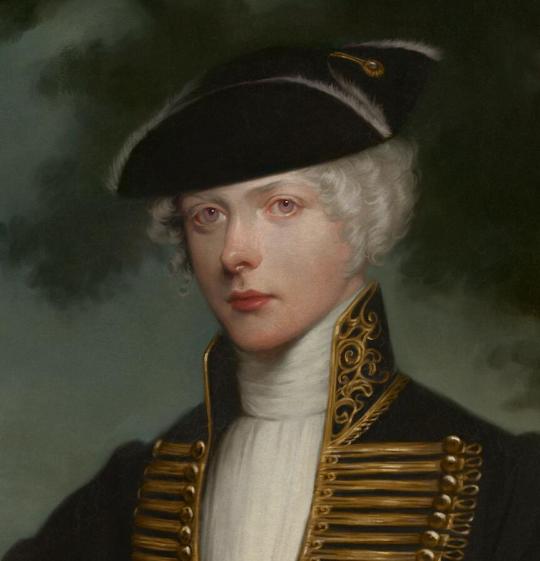
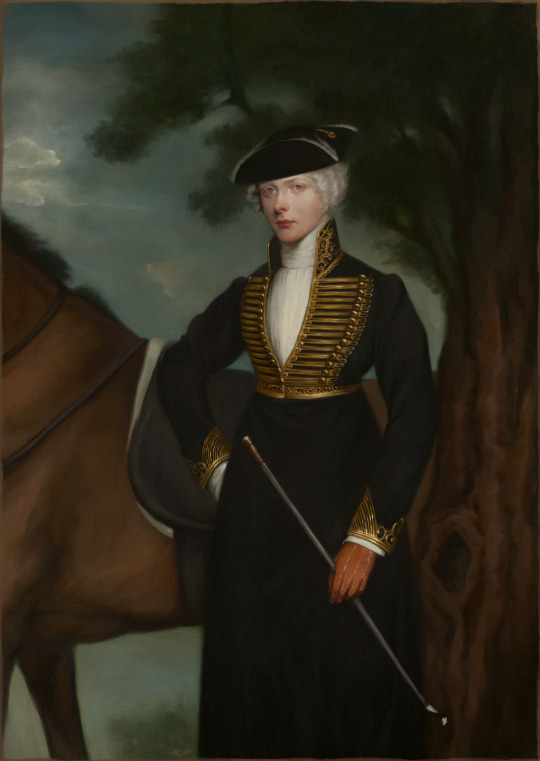
Julia of Prussia in a riding habit, c. 1810, by Thomas Lawrence (?)
This portrait was commissioned by her brother, Gilbert of Prussia. In the late 19th century, the portrait went missing from her home in Berlin but was recovered five months later. Currently, the portrait is in the possession of her youngest brother, Ludwig of Germany, and not available for public viewing.
Artist: Elizabeth Wakou (twi: elizamaru_)
*Do not repost
*Used references when drawing
(Queen Louise of Prussia’s riding habit, see here;
Elisabeth of Hesse or Elizabeth Feodorovna of Russia’s facial features, see here;
Princess Anna Amalia of Prussia’s hat, see here;
and Thomas Lawerence’s painting styles. )
#not millenraven's work#nyo prussia#aph prussia#hws prussia#nyotalia#historical hetalia#moderator's commissions#in fact I prefer Juliana of Prussia....#Julchen is not really a formal name right#her hat is sorta out of fashion for some reasons
68 notes
·
View notes
Text
Masterlist - Female Ginger
2000s
Abby Donnelly
Beatrice Kitsos
Bebe Wood
Darby Camp
Ella Ballentine
Francesca Capaldi
Isla Johnston
Larsen Thompson
Liliana Mumy
Lilly Dreesen
Maggie Elizabeth Jones
Sadie Sink
Sadie Stanley
Sophia Lillis
Summer Fontana
90s
Abigail Cowen
Alexia Fast
Alina Bobyleva
Alina Kovalenko
Annie Thurman
Bonnie Wright
Carmen Solomons
Dakota Blue Richards
Debby Ryan
Elizabeth McLaughlin
Ellie Bamber
Emma Kenney
Georgie Henley
Georgina Sadler
Helena Barlow
Janet Devlin
Jeni Ross
Jordan Clark
Juliette Angelo
Katherine Barrell
Katie Stevens
Lily Newmark
Liv Hewson
Louisa Connelly-Burnham
Mackenzie Lintz
Madelaine Petsch
Madeline Brewer
Madison Lintz
Madisen Beaty
Molly Quinn
Poppy Gilbert
Rachel Hurd Wood
Rosie Day
Shannon Purser
Sophie Turner
Swantje Wördemann
Tavi Gevinson
Zoe de Grand Maison
80s
Alex Paxton Beesley
Amanda Righetti
Amy Manson
Amy Wren
Annette Lober
Ashley Bell
Barbara Meier
Breeda Wool
Brittany Allen
Brittany Snow
Cinitia Dicker
Danielle Kind
Diana Gómez
Emily Tyra
Emily Wilson
Evan Rachel Wood
Genevieve Angelson
Haley Strode
Holland Roden
Holley Fain
Holliday Grainger
Jade Ramsey
Jane Levy
Jessica Keenan Wynn
Jill Morrison
Josefine Preuß
Joy Nash
Julianne Hough
Juno Temple
Karen Gillan
Katie Leclerc
Lindsay Lohan
Lily Cole
Marcella Lentz-Pope
Maria Burghardt
Meg Steedle
Nicole LaLiberte
Palina Rojinski
Rose Leslie
Sarah Hay
Tuppence Middleton
Vanessa Bayer
Vanessa Lee Evigan
Zena Grey
Zoe Boyle
70s
Amy Adams
Antonia Holfelder
Chelah Horsdal
Clare Grant
Darby Stanchfield
Elisabeth Gelabert
Erin Chambers
Katherine Parkinson
Isla Fisher
Jessica Chastain
JoAnna Garcis Swisher
Lauren Ambrose
Marielle Heller
Nathalie Boltt
Rebecca Mader
Sabrina Grdevich
Sarah Rafferty
Sasha Alexander
60s
Alex Kingston
Amy Yasbeck
Andrea Sawatzki
Connie Britton
Julianne Moore
Kate Walsh
Lea Thompson
Marcia Cross
Molly Ringwald
Rebecca Stab
Susan Walters
Tilda Swinton
50s
Annette Bening
Chloe Webb
Dana Delaney
Ellen Crawford
Laura Innes
Patricia Bethune
#masterlist#masterlist female ginger#2000s fem ginger#90s fem ginger#80s fem ginger#70s fem ginger#60s fem ginger#50s fem ginger
58 notes
·
View notes
Quote
Les gens pensent qu'une âme soeur est leur association parfaite, et tout le monde lui court après. En fait, l'âme soeur, la vraie, est un miroir, c'est la personne qui te montre tout ce qui t'entrave, qui t'amène à te contempler toi-même afin que tu puisses changer des choses dans ta vie. Une vraie âme soeur est probablement la personne la plus importante que tu rencontreras jamais, parce qu'elle abat tes murs et te réveille d'une claque.
Elisabeth Gilbert
22 notes
·
View notes
Text
cleradin lettergate au but its just emily elisabeth dickinsons letters to susan huntington gilbert dickinson
“but the words wont come, tho the tears will, and i sit down disappointed, yet darling *cleric*???, you know it all- then why do i seek to tell you? I do not know;in thinking of those i love, my reason is all gone form me, and i do fear sometimes that i must make a hospital for the hopelessly insane and chain me up there such times, so i wont injure you.”
gay ,, gay gay gay gay
#byler#cleradin#emily dickinson#susan gilbert#lettergate#gay#gay people#dont do it its plagiarism#i added the cleric part obvi miss emily did not say that to sue#mine
6 notes
·
View notes
Text
Women and literature: letters, prayers and poems
“Women participated in personal relationships with churchmen. For example, Eva Crispin (d. 1099), who retired to the abbey of Le Bec, treated the brother of Gilbert Crispin as her spiritual son. A relationship such as this probably involved spiritual guidance and counselling as well as practical advice and support. Margaret, Queen of Scotland, adopted Lanfranc as her ‘spiritual father’ c. 1070–89, 7 and Lanfranc wrote to her to express his joy at accepting the role. Queen Margaret had requested Lanfranc to send her some monks; in his letter he states that he was sending three, who were, in effect, on loan.
The monks, he states, are ‘really indispensable’ in his church, and this statement, no doubt, served to flatter the queen, since he had sent her men of ability. Further, if she was willing, he wanted them returned at a later date. They were clearly to give her practical support and advice concerning her establishment of Holy Trinity, Dunfermline. Thus a spiritual relationship could take a very practical form. The patronage of the church was intrinsic to aristocratic culture, and royal women were often involved in patronage of not only the fabric of the buildings through grants of land and emoluments but also interior furnishings, books and relics.
For example, Countess Judith of Flanders presented a fine crucifix to Durham and sacred relics and objects of art to the abbey of Weingarten, including a relic of the holy blood that she had inherited from her father. Queen Matilda, the wife of the Conqueror, gave a richly decorated chasuble to the monks of Saint-Évroul, and Adeline, the wife of Roger of Beaumont, gave them an ‘alb richly ornamented with orphrey’. Queen Matilda, the wife of Henry I, established an Augustinian house of canons, patronised other religious institutions and made personal gifts of bronze candlesticks to Hildebart of Lavardin and Cluny. She provided Chartres with two bells and Westminster Abbey with liturgical garments.
Queen Matilda received a letter and prayer composed for her by Bishop Herbert Losinga of Norwich in 1118. The prayer to St John is a lyrical plea for healing and health, for the saint to act as an intercessor for the forgiveness of sins and for Matilda to be given to the protection of the Virgin Mary. Given that Matilda died in May 1118, it is possible that the prayer was composed for her in the context of illness. The choice for the direction of this prayer is interesting, since St John was a virgin, and this is stressed within the prayer. The virgin John was a suitable intercessor with the supreme Virgin – the Virgin Mary.
Herbert, when composing the prayer, would have carefully selected appropriate imagery befitting a queen. The fruit of Queen Matilda’s artistic and literary connections, the letters and literature which survive, served to ‘create an aura of legitimacy and prestige’ in her position as queen. Spiritual counsel could be an important part of the relationship between leading churchmen and important political women such as the queen, or powerful countesses. The relationship between important noblewomen and clerics thus stimulated the production of letters and spiritual texts.
A critical re-evaluation of these texts could begin to trace the developing discourse of twelfth-century female spirituality in the particular context of prescriptive spirituality for the recipient in her public role as queen. The cultivation of a spiritual relationship could yield political dividends and it could thus be used to influence political events of significance. Thus spiritual relationships were an expression of aristocratic social cohesiveness and a route whereby women could exert power.
An impressive illustration of these themes is provided by Adela of Blois, the daughter of William the Conqueror, and Matilda, who married Stephen count of Blois (d. 1102). Adela was a keen patron of the arts. As Elisabeth van Houts pointed out, she was a patron of the poet Godfrey of Rheims, who, in 1080–5, wrote to Adela praising her as a regia virgo, a royal virgin. Godfrey wrote that it was God’s will that William had been successful at Hastings, since Adela was then born the daughter of a king instead of a duke.
Hugh of Fleury dedicated his Historia Ecclesiastica to her. He praised her for her literacy, generosity and intelligence. Adela had also received the Flowers of Psalms and seven prayers selected by Anselm at her request. He also sent some prayers that he had composed for her. These were a decisive break with previous traditions in personal prayer, and marked a significant step in the development of the Anselmian revolution in the composition of texts for personal devotion. He also included advice on how to meditate.
The relationship between Adela and Anselm was of both a political and a spiritual, personal nature. Eadmer reveals that it was Adela who played a pivotal role in resolving a dispute between her brother Henry and Anselm in 1105 at the height of the conflict between them. Eadmer informs us that she sent to Anselm to tell him that she was ill and he diverted to minister to her. She was appalled to hear that her brother was about to be excommunicated and arranged a meeting between Anselm and Henry at which they resolved their differences for good.
Her illness was probably a pretext to divert Anselm to her court, where she could influence him. Adela was a peacemaker in the dispute between her brother and the exiled archbishop of Canterbury, and arguably she acted to care for her brother’s soul in a familial context. However, the resolution of the dispute is also of political significance, and here Adela’s actions assume a wider context, since she used her informal influence, which was strengthened through a spiritual relationship, to resolve a political dispute.
There is a further dimension to the fact that Anselm diverted to see Adela on hearing that she was ill. Evidently his role as a spiritual adviser involved an obligation for the care of her soul to attend her in the case of serious illness to prepare Adela for death. This network of spiritual guidance and social intercourse was normal and part of the culture of aristocratic and noble women – indeed, the women of the Conqueror’s family were particularly prominent as patrons.
Adela attracted the attention of important clergy who were keen to foster relations with her. For example, Baudri abbot of Bourgueil (1079–1130) wrote a poem of 1,367 lines for Adela which describes the furnishings and rich decorations of her hall and bedchamber. It used to be thought that the rich visual imagery and the detail in his descriptions were suggestive of a personal relationship between Adela and Baudri, and that he might have visited her palace.
However, Shirley Ann Brown and Michael Herren have cast doubt on this assumption in their comparison of the Bayeux Tapestry itself with the descriptions of the tapestry which Baudri purports to have seen hanging in Adela’s chamber, which historians have assumed was the Bayeux Tapestry. Whether or not Baudri visited Adela, the poem is significant, since it illustrates what an important abbot thought was a suitably flattering description to offer an important woman, as well as providing clues about the material culture of an aristocratic secular woman.
It also illustrates the range of cultural influences in northern France, and significantly Baudri emphasised the role of Adela in the design and creation of tapestries. Firstly, he described a role which women of Adela’s status undertook, that is, to oversee and direct the women who made cloth and designed tapestry, and, secondly, he flattered her artistic skills. Baudri’s relationship with Adela was not unique: he wrote poetry and obituaries for other women, although none of such length and detail as those to Adela.
He wrote to Adela’s sister, Cecilia, a nun at Holy Trinity, Caen, as well as to a certain Agnes, a Lady Emma and Beatrice. He also wrote to Constance, his spiritual daughter, who had received her education at the convent of Le Ronceray in Angers, and who replied to his poetry. He composed poetry for Muriel, who was likewise at Le Ronceray and from whom he received poetry in return. Anselm was therefore not alone in the way that he fostered relationships with powerful women.
Eadmer reveals that on one journey Anselm was delayed and entertained by Countess Ida of Boulogne, when he ‘conferred’ with her. According to Sally Vaughn, Ida was his ‘closest and most intimate confidante, student, spiritual daughter and political ally’, with whom he corresponded until his death. Powerful women were worth cultivating: Matilda countess of Tuscany provided him with an escort whilst he was passing through her lands on his way from Rome in 1104.
Anselm afterwards sent her a complete copy of his Prayers and Meditations which was made and illustrated for her at Canterbury: a step which again confirmed the shift from private meditation to public consumption of his devotional literature. Wilmart argues that the letters and prayers date from c. 1104, and that Anselm praised Matilda for her prudence; he informed her that her people had taken him on a short safe route, and he praised her for her religious patronage and urged her to take the veil when the moment of death arrived.
This is good evidence of the importance of the involvement of a secular noble woman in cross-cultural exchanges, and shows Matilda’s importance in her cultural, religious and political activities. It is also worthy of note that Anselm urged her to take the veil only at the moment of death, not before. Other churchmen dispensed spiritual advice to women throughout the twelfth century, for example through the medium of hagiography.
The study of Vitae has been an area of increased scholarly interest, and the meaning of saints and saints’ cults has likewise received considerable attention, as has women’s mysticism and spirituality. Despite the hagiographic convention and the Christian didactic purpose of saints’ lives, they are valuable sources which can be used to study aspects of noblewomen and power in twelfth-century society, although such a project has its own methodological difficulties.
Indeed, Jocelyn Wogan-Browne discussed three female-authored twelfth-century Vitae and showed the specific problems inherent in recovering women’s experience from hagiographic sources. The twelfth-century Vita of Christina of Markyate has been studied for its value as a source for twelfth-century female religious. Thomas Head, however, analysed the Life in terms of the socio-cultural contexts of twelfth-century developing notions of marriage. He stressed the power of Christina to seize control over her own life to become ‘a primary actor in the drama of her own salvation’.
Her difficult adolescence where she was in fear of marriage is a topos typical in Vitae of female saints. Yet the female life cycle can be seen as paramount in defining Christina’s options, since Christina became secure in her vocation only once her childbearing years were over. Other Vitae confirm that social and spiritual relationships were important forms of male–female interaction and collaboration.
The Life of St Hugh of Lincoln by Adam of Eynsham was written as part of the campaign for Hugh’s canonisation. It depicts a courtly political bishop attending to the spiritual needs of his flock, including, for example, ‘devout matrons’ and the bereaved Queen Berengaria following the death of Richard I, and adjudicating in cases of adultery. More interestingly, women’s voices can be detected as witnesses to his sanctity.
A significant number of those who testified to miracle cures were women; of twenty-nine individuals who are listed as having been cured of some affliction by miracles eighteen were women. In this respect this 2:1 pattern of imbalance in women : men miracle cures is a phenomenon that applies to other twelfth-century saints. Women’s testimony and role as sources of information on the saint are therefore one way in which they could influence the shape and content of the text.
Georges Whalen has shown that in Goscelin’s Life of Edith statements of women’s theological equality in Christ were employed where women were the majority of witnesses to allay fears about the validity of female witnesses. No such statements were required for male witnesses. Women were prominent as witnesses, and thus in the creation of social memory, in John of Ford’s Life of Wulfric of Haslebury, a parish priest turned anchorite in rural Somerset who died in 1154. These witnesses included women from the nobility, five local anchoresses and village women.
The Life also depicts social interaction between the anchorite and women, as well as spiritual advice and relationships. The dispensation of spiritual advice could be achieved through social/spiritual interaction, and also through letters. Peter of Blois wrote to the archdeacon of Picardy that his niece Alice should not be forced to become a nun, but in a later letter to her he congratulated her on her choice of vocation.
In the mid-twelfth century Amice countess of Leicester received a letter from Gilbert Foliot. Writing c. 1163–68, he apologises for being unable to visit her, owing to his duties and obligations, and states that he ought to have written to her before. Gilbert Foliot was also in correspondence with her husband Earl Robert (II) of Leicester (d. 1168) in the same period, which suggests that the extant letters were sent together but were intended for each individual separately. These socially exclusive circles of friendship, cultivated through spiritual relationships, reinforced aristocratic and noble social and political cohesion. Noblewomen, as part of the landed élite, actively participated in such relationships.”
- Susan M. Johns, “Patronage and Power.” in Noblewomen, Aristocracy and Power in the Twelfth-Century Anglo-Norman Realm
#susan m. johns#noblewomen#queens#noblewomen aristocracy and power#medieval#high middle ages#history
16 notes
·
View notes
Text
“Er tanzte mit dem Tod (He danced with Death)”
Fandom: Hetalia
Characters: Prussia, der Tod (Death), Germany, Italy Veneziano, France
Tags: Major Character Death, inspired by Elisabeth das Musical, dancing with death, Death, Character Death, Suicide, Suicide Notes, Suicidal Thoughts, Dancing, Poison, Gun Violence, Kiss of Death, Mayerling kiss/waltz type death
Summary: Gilbert Beilschmidt was once great. He used to be strong, people bowed in reverence and fear when he passed. People cowered and ran when he made his presence known and held out his blade. He used to be powerful, he had great leaders in charge of an even greater country. People from his land would be written down in the history books and remembered for the rest of time. He would be remembered as a fierce nation. And he was, for a time. They fierceness became more focused, and he slowly fell to his infatuation with Death.
Link:
#hetalia#hws#aph#hws prussia#aph prussia#gilbert beilschmidt#hetalia fanfiction#hws fanfiction#aph fanfiction
5 notes
·
View notes
Text
Cannon Hall-The History behind Spencers Library.
Creating a House of significance.
Back in the 13th century, Gilbert Canun was the first recorded inhabitance of a property on site, this is thought to be the origin of the name. Ownership then passed to the Bosville family of ardsley, and onto different families until John Spencer bought the estate in 1660, marking the start of almost 300 years of the Spencer family expanding and improving the hall and grounds, founded by great wealth made in the local iron industry, now an impressive and elegant building.

From the family home to public museum.
Elisabeth Fraser Spencer Stanhope, the last of the family line, sold the hall to Barnsley corporation in 1951 and made into a museum, which opened in 1957. From the 1950’s to the present day, a remarkable mix of paintings, drawings, ceramics, glass, metalwork and furniture has been brought together for the public’s enjoyment. The rooms at the museum include both historic room settings and gallery displays of art works spanning the centuries.
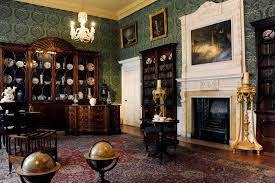
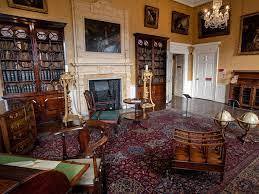

Gentlemen, Activists and Artists.
The museum provides extensive historic archive of the family including letters, diaries and photographs this provides a glimpse of the personalities and lifestyles of the different family members and is also a great record of how the estate was run and the family’s role in Barnsley-Yorkshire and Britain. John Spencer, who loved all things books, sport and fine dinning, added two ground floor wings to the building in the 18th century, creating the library and dining room. He and his wife added further rooms to the upper floors for their growing family. Later member of the members of the members were all renowned artists of the late 19th and early 20th centuries. In the 19th century the final additions were made to the house, including ballrooms, kitchens and servant quarters.
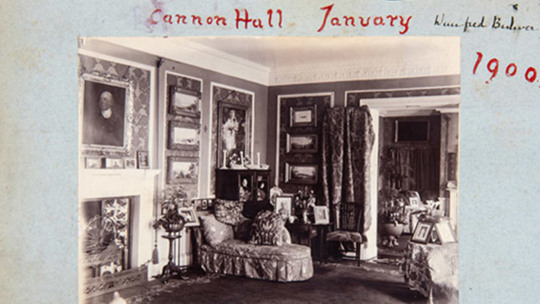
0 notes
Photo


Sara lance x Elisabeth Gilbert
3 notes
·
View notes
Text
Cannon Hall Museum - History

The land was first recorded in the Domesday Book in 1086 as containing a manor house. In the 13th Century the first recorded inhabitant of the property was Gilbert Canun then passed to the Bosville family of Ardsley and on to different families throughout the centuries until John Spencer bought the estate in 1660. For 300 years after the Spencer and Spencer Stanhope family expanded theproperty and its grounds.
John Spencer added two ground floor wings to the house in the 18th century which created the library and dining room. In the early 19th century, Walter Spencer Stanhope and his wife, after inheriting the hall, added further rooms upstairs for their children. Later in the 19th century, the final additions to the property was done, adding a ballroom, kitchen and servant quarters in the house. The Spencer Stanhope made their fortune in the local iron and coal industries. Walter Spencer Stanhope was a Tory MP who became friends with Independent MP William Wilberforce, the anti-slavery campaigner.
Elisabeth Fraser Spencer Stanhope was the last of the family line, she sold the estate to Barnsley Cooperation in 1951 and they decided to turn the house into a museum, which opened in 1957. Over the last 70 years, the house has been filled with many beautiful and historic pieces, with each room being decorated with spectacular paintings, ceramics, glass, furniture, metalwork and drawings to create historically accurate room settings for the public to view and enjoy.
References:
Barnsley Museums. (2023). Museum. [Online]. Cannon Hall Museums. Available at: https://www.cannon-hall.com/museum [Accessed 12 February 2024].
Dunn, K. (2023). A SHORT HISTORY OF CANON HALL, BARNSLEY. [Online]. on - yorkshire magazine. Available at: https://www.on-magazine.co.uk/yorkshire/history/history-of-canon-hall-barnsley/ [Accessed 12 February 2024].
Shepley Editors. (2016). Cannon Hall 1829. [Online]. Shepley Village Community. Last Updated: 3 January 2016. Available at: https://www.shepleyvillage.org/download/cannon-hall-1829/ [Accessed 12 February 2024].
https://www.shepleyvillage.org/download/cannon-hall-1829/
0 notes
Video
vimeo
Agoria - CALL OF THE WILD from Loic Andrieu on Vimeo.
Directed by Loïc Andrieu
Produced by SOLDATS FILMS
Music by AGORIA (ft. STS) performing "CALL OF THE WILD"
© Soldats Films
© 2019 Sapiens Recordings
Producer: Pierre Cazenave-Kaufman (Soldats Films)
Director of photography: Simon Chaudoir
Editor: Naza Giral (Soldats Films)
Art director: Freyja Bardel
Artistic Director: Loïc Andrieu
Colorist: Mathieu Caplanne
Los Angeles Producer Gaetan Rousseau (Paradoxal inc)
Wardrobe Stylist Los Angeles: Yasmine Abraham
Re-Recording Mixer: Christophe Leroy
VFX House: REEPOST
Starring Fleur Geffrier, Carl Crupud, Sean Roc Smith, Ron Guilbert, Christianno Chavez, Sam Ingraffia
Based on feature film script "LIFE LINE" written by Hedi Chellouf & Loïc Andrieu
Label: Sapiens
Video commissioner: Christian De Rosnay
Development manager: Juliette Labrousse
Production Service Los Angeles: PARADOXAL INC
Sound facilities: YELLOW CAB STUDIOS
ADR & Foley Mixer: Christophe Leroy
Sound designers: Alexis Jung & Olivier Ranquet
Foley Artist: Florian Penot
Special thanks: Victoria Videnina
----------
Los Angeles crew
Executive Producers: Pierre Cazenave-Kaufman (Soldats Films)
Associate Producer: Gaetan Rousseau (Paradoxal Inc)
Production Service Los Angeles: Paradoxal Inc
Line Producer: Hugo Marcel
Production Manager: Thomas Duchêne
1st AD: Manuel Roman
2nd AD: Nick Brokaw
Production assistants: Eric Hellberg & Yohan Lefevre & Martin de Bokay & Nicolas Thau & Timothy Watson
Vocal Coach: Laura Rizzotto
Location Scout: Kaelyn Phillips
Art director: Freyja Bardell
Set decorator: Crystal Criego
Prop master: Dominic Wymark
Leadman: Eligh Macias
Set Dresser: Daniel R. Oregel & Kevin Lopez, Pedro Ramirez, Taylor Williams
Wardrobe Stylist: Yasmine Abraham
Wardrobe Assistant: Coleen Chan
HMU: Jessica Sainclair
Casting director: Sarah-May Levy
Cast: Fleur Geffrier, Carl Crupud, Sean Roc Smith, Ron Gilbert, Christianno Chavez, Sam Ingraffia, Spencer Frankeberger, Deron Cash, Rusty Rooftop, Gabriella S.Robinson, Shan Moreno, Sadyr Diouf, Natasha Churchil, Bodhi Dell, Johan Domhoff, Ryan Gatewood, Abraham Sesay
Newscaster Voice Over: Douglas Rand
1st AC: Vincent Toubel
2nd AC: Dusty Saunders & Rogelio Mosqueda
Steadicam Operator: Olivier Merckx
Sound operator: JP Delacruz
Sound design: Alexis Jung & Olivier Ranquet
Mix: Christophe Leroy
Gaffer: Joel Gill
Best boy electric: Gerardo Ruiz
Electrics: Laura Sfeir, Eddie Teram, Davis Villa, James Wray
Key Grip: Dennis Pires
Best Boy Grip: Ivan Garcia
Grips: Robert Dulany, Ardy Fatehi, Michael Parlinic
Motocrane: DRIVER’S EYE TEAM
LAPD SERVICE: Paul Hinton, Darryl Martin
Catering: Mia’ Cuisine
Los Angeles Studios: BEEPS DINNER, SILVER DREAM FACTORY, ESCOBAR FAMILY
Los Angeles Costumes rental house: UNIVERSAL COSTUME, WESTERN COSTUME
Los Angeles Police Car rental house: CINEMA VEHICLES
Los Angeles props rental house: ISS, SET STUFF OMEGA
Los Angeles Camera rental house: PANAVISION HOLLYWOOD, CHAPMAN : LEONARD, JQ DA SILVA
----------
Paris crew
Production Company: Soldats Films
Producer: Pierre Cazenave (Soldats Films)
Line Producer Paris: Quentin Henneguelle (Soldats Films)
Production Manager: Charlotte Giral (Soldats Films)
1st AC: Maud Cyrano
Gaffer: Michael Monod
Electrics: Jerôme Baudouin, Cedric Guerby
Key Grip: Benjamin Rame
Prop Master: Ludovic Jardiné
HMU: Elisabeth Pilarsky
On Set VFX Supervisor: Clement Germain
YELLOW CAB STUDIOS
Sound designer: Alexis Jung & Olivier Ranquet
Foley Artist: Florian Penot
ADR & Foley Mixer: Christophe Leroy
SOLDATS CREW
Post Producer: Naza Giral (Soldats Films)
After Effects by: Naza Giral (Soldats Films) - Rémi Muzzupapa (Soldats Films) – Paul Laurent (Soldats Films) - Victor Sellier (Soldats Films)
REEPOST CREW
REEPOST VFX Supervisor: Adrien LEPINEAU
REEPOST VFX Post-producer: Loundja OUSSANA
Assistant post-production: Tilou MARTIN
3D Supervisor: Stephen PLONGEON
3D Artists:
Xavier VERDIER
Marion GUICHENUY
Geoffrey PONS
Olivier MASSON
Compositing:
Matthieu DESTRADE
Marc LATIL
Benoit MESSAGER
Johan ROCHE
Gaetan BAILLEUL
Thierry BONNEAU
Mathieu PLESSIS
Alexis BAILLA
Tracking:
Toufik MEKBEL
Walid BEN HEND (VISION AGE VFX)
Studio La Villette: Navarro
------------------
Special thanks to
Agoria « You made it happen ! »
Christophe Leroy for Yellow Cabs Studio « Sound Wizard ! »
1 note
·
View note
Text
2024 Best Musical World Cup Qualifiers Official List A-K
This section of the Official List features musicals between letters A-K that have NOT automatically qualified.
Here is the list of musicals that have automatically qualified.
Here is the list for letters L-Z.
& Juliet
9 to 5
13: The Musical
21 Chump Street
25th Annual Putnam County Spelling Bee
35MM: A Musical Exhibition
42nd Street
1776
1789: Les Amants de la Bastille
Ablaze
The Act
Adamandi
The Addams Family
Aida
Ain't Misbehavin
Alice By Heart
Allegiance
American Idiot
An American in Paris
American Psycho
Amélie
Anastasia
Anne & Gilbert
Annie
Annie Get Your Gun
Anyone Can Whistle
Anything Goes
Applause
The Art of Pleasing Princes
Assassins
Av. Larco
Avenue Q
Back to the Future the Musical
The Band's Visit
Bandstand
Bare: A Pop Opera
Bat Boy
Beauty and the Beast
Bedknobs and Broomsticks
Beetlejuice
Be More Chill
The Best Little Whorehouse in Texas
Big Fish
Big River
Billy Elliot the Musical
Black Friday
Blood Brothers
Bloody Bloody Andrew Jackson
Bonnie and Clyde
The Book of Mormon
Bran Nue Dae
Bridges of Madison County
Bright Star
Bring It On
Bugsy Malone
Bye Bye Birdie
La Cage aux Folles
Calendar Girls
Calvin Berger
Camelot
Caroline, or Change
Carousel
Carrie
Catch Me if You Can
Charlie and the Chocolate Factory
Chess
Chitty Chitty Bang Bang
A Chorus Line
Cinderella (Rodgers and Hammerstein)
City of Angels
Clown Bible
The Color Purple
Contact
The Count of Monte Cristo
Crazy for You
Curtains
Damn Yankees
De 3 Biggetjes
Dear Evan Hansen
Death Note: The Musical
Death Takes a Holiday
The Devil
Devotion of Suspect X
Dogfight
The Dolls of New Albion
Don Juan
Dorian Gray
Dracula, the Musical
Dreamgirls
The Drowsy Chaperone
Elisabeth
Émilie Jolie
Everybody’s Talking About Jamie
Evil Dead: The Musical
Evita
FANGIRLS
The Fantasticks
Finding Neverland
Fiorello!
Firebringer
The Fisherman’s Daughters
Fly by Night
Follies
Fosse
Frankenstein (Wang Yong Beom + Brandon Lee)
Frankenstein: A New Musical
The Frogs
Frozen
Funny Girl
A Funny Thing Happened on the Way to the Forum
A Gentleman's Guide to Love and Murder
Godspell
Grease
Groundhog Day
Guys and Dolls
The Guy Who Didn't Like Musicals
Hair
Hallelujah, Baby!
Hans Christian Andersen
Harmony
Heathers
Hedwig and the Angry Inch
Hello, Dolly!
Holy Musical B@man!
How to Dance in Ohio
How to Succeed in Business Without Really Trying
Hoy no me puedo levantar
In the Green
In Transit
Jack the Ripper
Jagged Little Pill
Jane Eyre
Jekyll and Hyde
Jerome Robbins' Broadway
Jersey Boys
Jesus Christ Superstar
Joseph and the Amazing Technicolor Dreamcoat
Kimberly Akimbo
King's Table
The King and I
Kinky Boots
Kismet
Kiss Me, Kate
Kiss of the Spider Woman
15 notes
·
View notes